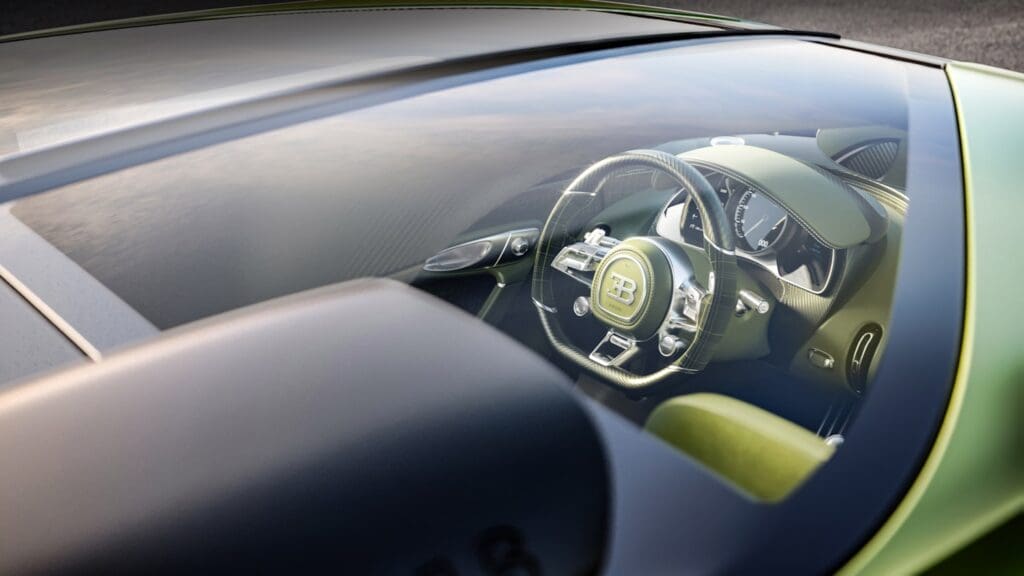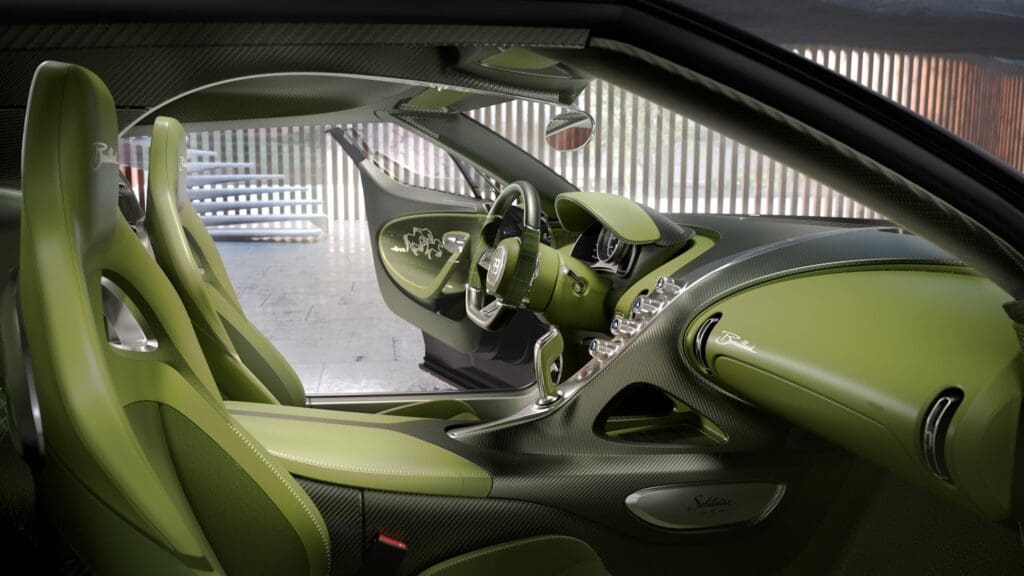Monterey Car Week hosts the public debut of a very Bugatti idea, made newly formal. The marque has launched Programme Solitaire, a coachbuilt avenue for one‑of‑one creations that sits beyond the already rarefied Sur Mesure service. Its first car, named Brouillard after Ettore Bugatti’s favored horse, uses the brand’s 1,600 PS quad‑turbo W16 platform as a canvas for a different kind of authorship.
The exterior reads as sculpture first, mechanism second. Bugatti’s design team avoided hard character lines and instead leaned on reflection and curvature to suggest muscle, citing the way a trained horse carries tension under the skin. Surfaces are taut rather than sharp, so light does more of the describing than edges do. Proportionally, the lower third is rendered in darker tones that visually tie the body to its shadow. That trick lightens the perceived mass of the upper body, makes the car appear longer and lower, and gives the wheels more visual presence. The functional pieces have been absorbed rather than stuck on. A fixed ducktail provides aero balance without disturbing the silhouette, and the rear diffuser gains surface area through novel exhaust packaging. Intake paths are managed to pull air through the radiators and accelerate it out, improving cooling efficiency without shouting about it.

Open the door and the reference to Ettore’s horse becomes part of the room rather than a theme. The glass roof gives a high, airy feel and lets the central spine run uninterrupted from exterior to interior, visible through the transparent panel above. Materials are a quiet showcase of craft. Custom‑woven fabrics from Paris introduce tartan patterns with a tailored precision. Green‑tinted carbon fiber sits alongside a greater number of machined aluminum components, so the interior reads less as a single material statement and more as a conversation between textures. The gear shifter is milled from one block of aluminum and carries a glass insert with a hand‑made miniature of Brouillard, a small focal point that rewards a closer look. Embroidered horse motifs appear in the door panels and seat backs, and the seats themselves have been shaped to the commissioning owner’s preference, finished with a distinctive leather patch layout. It all feels considered rather than collectible for its own sake, and it is designed to be read in natural light.


Underneath, Brouillard represents the highest evolution of Bugatti’s W16 era. The car is built on the latest carbon fiber and aluminum chassis that supports the 1,600 PS iteration of the quad‑turbocharged engine. The brief here is not to chase a new headline number but to refine airflow, cooling and stability within a more sculptural body. Air intakes and radiators work in concert to generate a pressure drop that draws more air through for better thermal management. The fixed rear element and expansive diffuser handle balance at speed. Torque figures and acceleration claims were not disclosed, though Bugatti states there is no compromise to performance, quality or design relative to its series W16 cars.

Programme Solitaire draws a straight line back to Bugatti’s roots. In the interwar years, the Type 57 chassis wore multiple in‑house bodies, from Galibier saloons to Stelvio convertibles and Atalante coupés, and of course the Atlantic that has come to define the era in the popular imagination. Jean Bugatti’s decision to bring coachbuilding inside the factory set the tone. Solitaire revives that mindset for the present day, with the intent to build no more than two commissions per year, each using existing powertrains and chassis and concentrating effort on unique bodywork and interior detail. It is an approach that suits the collector at the center of this first car, someone who collects Bugattis old and new, as well as the furniture of Carlo Bugatti and the bronzes of Rembrandt Bugatti. The brief asked for a single work that gathered those threads and acknowledged Ettore’s affection for his horses, including the story of Brouillard, the white horse speckled like morning mist that could open his stable door using a mechanism Ettore devised.
The result is a Bugatti that trades bravado for restraint. It presents power and complexity behind a calm surface, and it uses proportion and light as much as vents and wings. As the first statement from Programme Solitaire, Brouillard shows how far Bugatti is willing to bend its own template while keeping faith with the engineering beneath.